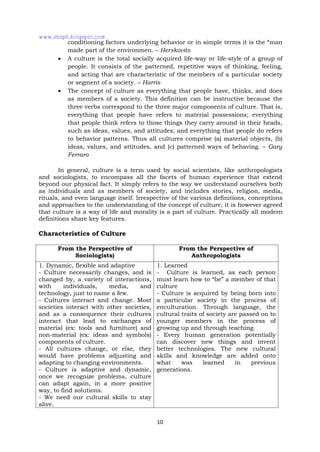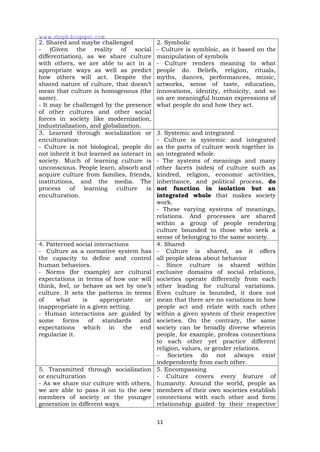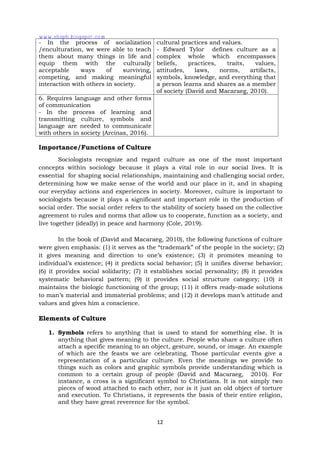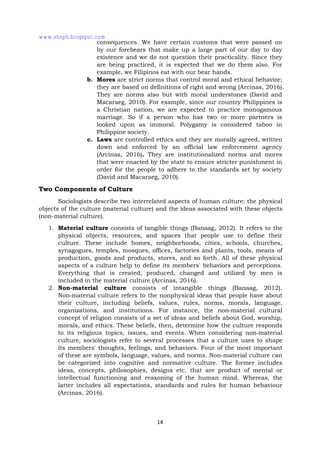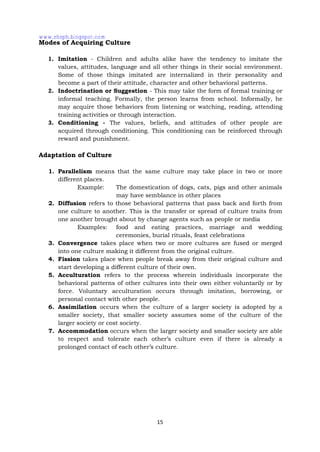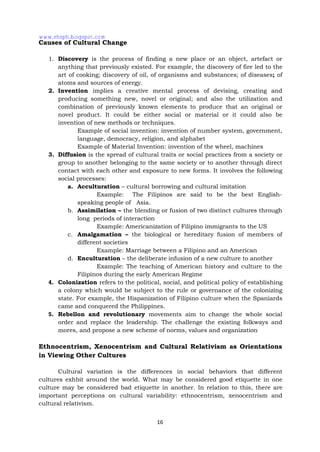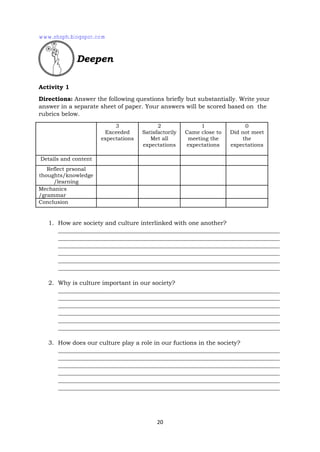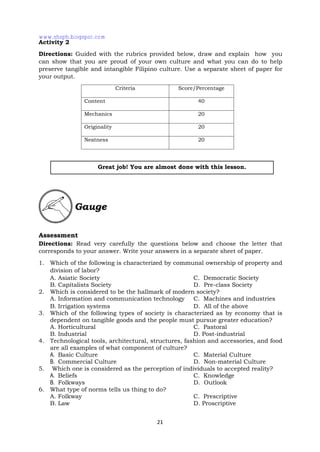The document provides information about understanding culture and society, including:
1) It defines culture and society from anthropological and sociological perspectives and discusses their relationship.
2) It describes some major characteristics of culture and society, such as shared territory, interaction, common way of life.
3) It differentiates between the various meanings of culture within society, such as norms, values, and patterns of interaction.
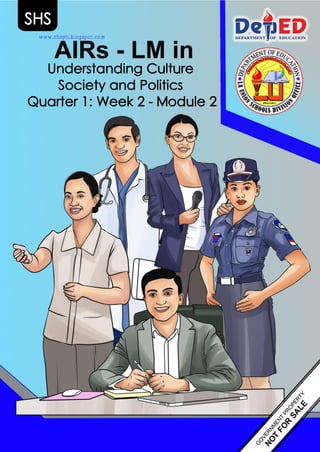
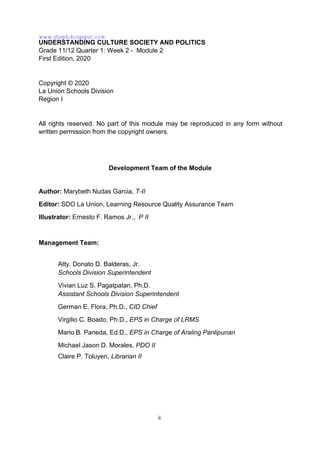

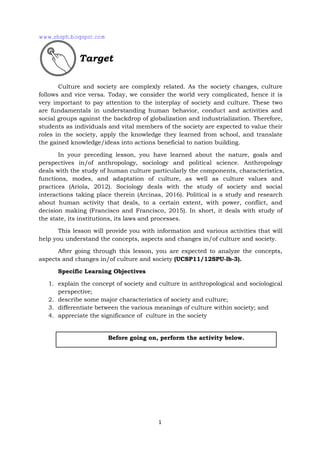



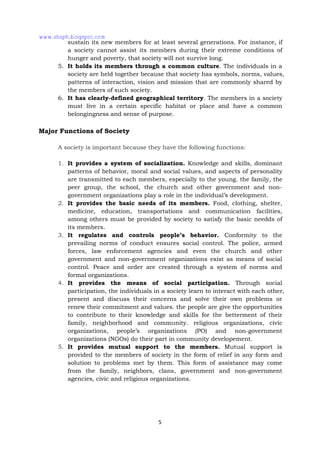
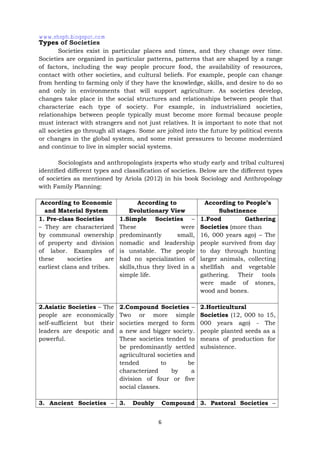

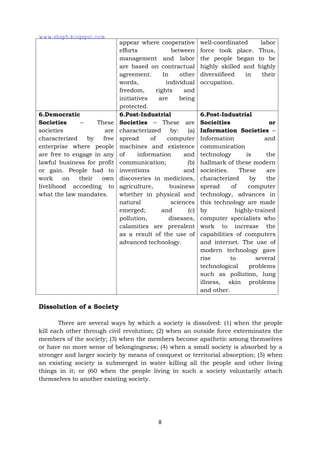
![9
The Concept of Culture
Meaning and Nature of Culture
It was E.B. Taylor who conceptualized the definition of culture in 1860s.
According to him, culture is a complex whole which consist of knowledge, beliefs,
ideas, habits, attitudes, skills, abilities, values, norms, art, law, morals, customs,
traditions, feelings and other capabilities of man which are acquired, learned and
socially transmitted by man from one generation to another through language and
living together as members of the society (Arcinas, 2016).
Below are other definitions of culture as mentioned in the book of David and
Macaraeg (2010) entitled“ Socioloy: Exploring Society and Culture”:
Culture is a historically transmitted pattern of meanings embodied in
symbols, a system of inherited conceptions expressed in symbolic form
by means of which men communicate, perpetuate, and develop their
knowledge about and attitudes towards life. – Clifford Geertz
Culture consists of learned systems of meaning, communicated by means
of natural language and other symbol systems, having representational,
directive, and affective functions, and capable of creating cultural entities
and particular senses of reality. – Roy D’Andrade
Culture is an extrasomatic (nongenetic,nonbodily), temporal continuum
of things and events dependent upon symbols. Culture consists of tools,
implements, utensils, clothing, ornaments, customs, institutions, beliefs,
rituals, games, works of art, language, etc. – Leslie White
Culture consists in the shared patterns of behavior and associated
meanings that people learn and participate in within the groups to which
they belong. – Whitten and Hunter
A society’s culture consists of whatever it is one has to know or believe in
order to operate in a manner acceptable to its members. – Ward
Goodenough
Culture is an instrumental reality, and apparatus for the satisfaction of
the biological and derived need”. It is the integral whole consisting of
implements in consumers’ goods, of constitutional characters for the
various social groupings, of human ideas and crafts, beliefs and
custom. – Malinowski
Culture in general as a descriptive concept means the accumulated
treasury of human creation: books, paintings, buildings, and the like; the
knowledge of ways of adjusting to our surroundings, both human and
physical; language, customs, and systems of etiquette, ethics, religion
and morals that have been built up through the ages. – Kluckhohn and
Kelly
Culture refers to that part of the total setting [of human existence] which
includes the material objects of human manufacture, techniques, social
orientations, points of view, and sanctioned ends that are the immediate
www.shsph.blogspot.com](https://image.slidesharecdn.com/ucspmodule21-230831060049-e7c1fadd/85/UCSP-Module-2-12-320.jpg)
